The Fitness Journey Instagram Won’t Show You: Real Results Without Perfect Gym Selfies
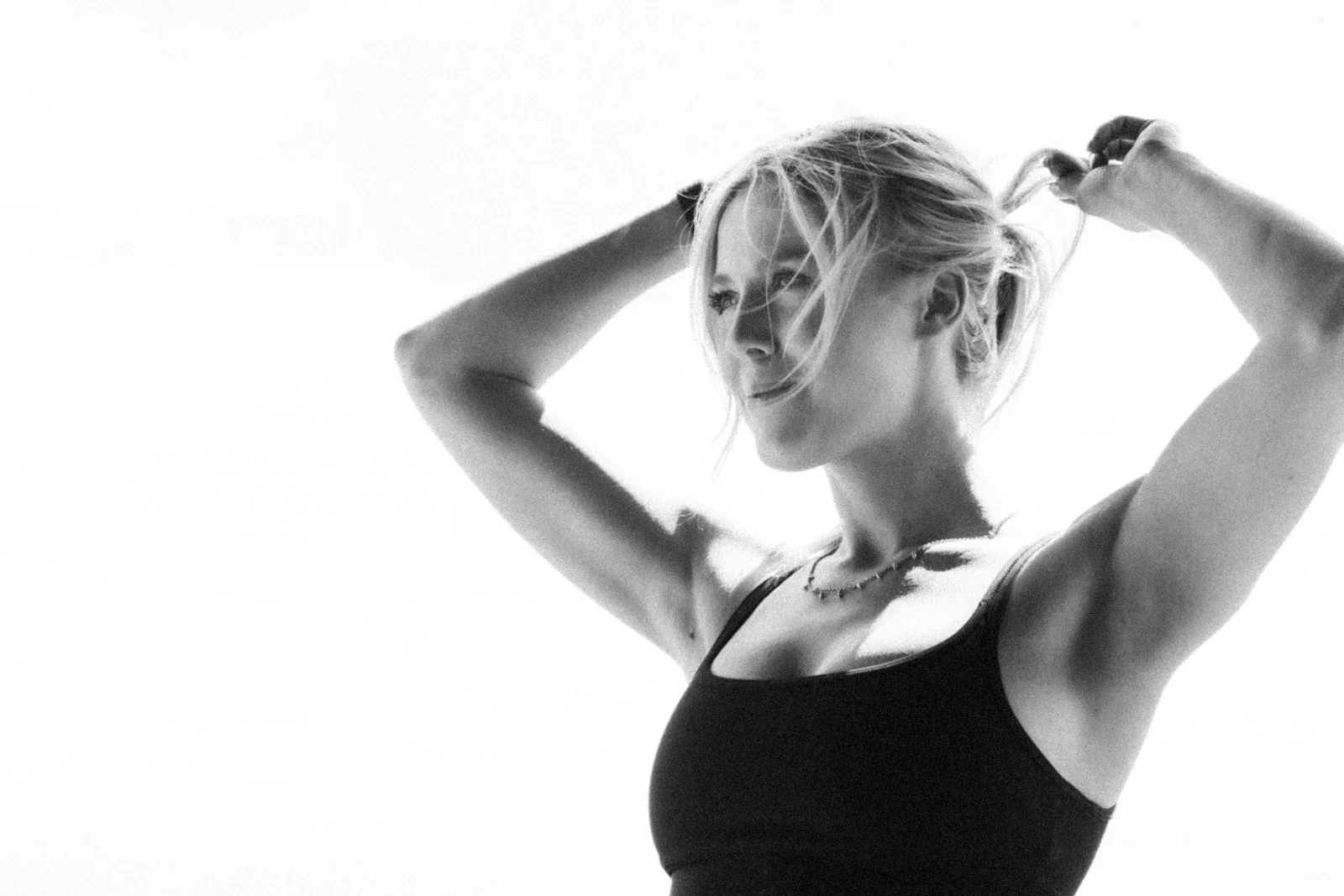
You know what Instagram fitness doesn’t show you?
The woman who worked out in her basement at 5 AM in her husband’s old t-shirt because it was the only time she had before the kids woke up.
The guy who started by walking around his block because the gym felt too intimidating.
The person who cried in their car after a workout—not from joy, but from frustration because they couldn’t do a single push-up.
Me, sitting on my bathroom floor at 2 AM, googling “why do I feel worse after starting to exercise” because nobody told me about the adjustment period.
That’s the real fitness journey. And honestly? It’s so much more powerful than any gym selfie with perfect lighting.
Let me show you what actually happens when real people start moving their bodies—no filters, no perfectly curated before-and-afters, just honest truth.
My “Fitness Journey” Started in the Worst Way Possible
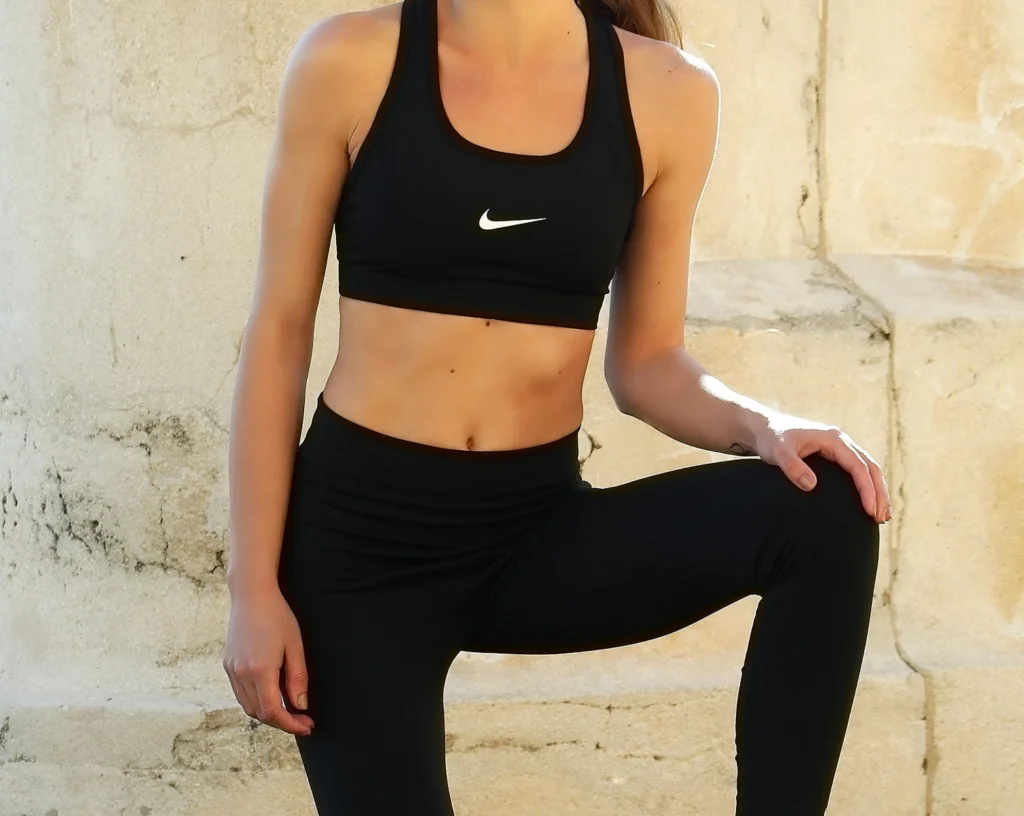
I need to be honest with you about how this began.
I didn’t wake up one day inspired and motivated. I didn’t have some profound moment looking in the mirror. I didn’t see an Instagram post that changed my life.
I started because I was exhausted. All. The. Time.
I couldn’t play with my niece without getting winded. I’d choose restaurants based on whether they had close parking. Carrying groceries up one flight of stairs? Forget it—multiple trips or die trying.
And the worst part? I felt like a failure before I even started.
Because everywhere I looked, fitness seemed to be for other people. People who:
- Already looked fit
- Had time for hour-long workouts
- Could afford fancy gym memberships
- Knew what they were doing
- Actually enjoyed exercise (these people exist??)
So I did what any anxious person does: I researched myself into paralysis. I followed fitness accounts, bought workout clothes I never wore, downloaded apps I never opened, and convinced myself I’d start “on Monday.”
Monday came and went. For like, six months straight.
The Instagram Fitness Lie We All Believe
Can we talk about what fitness looks like on social media versus real life?
What Instagram Shows:
| Instagram Reality | Actual Reality |
|---|---|
| Perfect gym outfits, matching set | Whatever clean-ish clothes you can find |
| Flawless makeup, hair styled | Ponytail you threw up 30 seconds ago |
| Smiling during burpees | Questioning all life choices during burpees |
| “Just did a quick 45-minute HIIT!” | Barely made it through 15 minutes, had to modify everything |
| Progress photos: 8 weeks, dramatic transformation | Progress photos: 8 weeks, “wait, which one is before?” |
| #MorningWorkout at 5 AM with sunrise | Still in bed, snoozed alarm 4 times, maybe tomorrow |
| “Feeling so energized!” | Feeling like you got hit by a truck |
| Green smoothie bowl with artistic toppings | Protein bar eaten in car, wrapper still on lap |
The truth? Those Instagram fitness people are either:
- Professional athletes (it’s literally their job)
- Genetic lottery winners (thanks, Mom and Dad)
- Showing you 30 seconds out of their whole day
- Sponsored and obligated to look perfect
- Using really good filters and lighting (never underestimate lighting)
And here’s what they’re NOT showing:
- The days they didn’t want to work out but did anyway
- The workouts where they felt weak and slow
- The injuries, setbacks, and plateaus
- The years (YEARS!) it took to build that strength
- The rest days, the Netflix binges, the pizza nights
- The mental work behind the physical results
You’re not comparing your real life to their real life. You’re comparing your behind-the-scenes to their highlight reel.
And that’s not fair to you.
What Actually Happened When I Started Moving
So I finally started. And by “started,” I mean I committed to walking for 10 minutes a day.
Not running. Not CrossFit. Not even fast walking. Just… walking. Around my neighborhood. In whatever clothes I was already wearing.
Here’s my brutally honest first month:
Week 1: The Honeymoon Phase
- Day 1: Walked 10 minutes, felt like a superhero
- Day 2: Everything hurt (wait, walking hurts??)
- Day 3: Skipped (too sore)
- Day 4: Walked 8 minutes, called it good
- Day 5: Skipped (weather excuse)
- Day 6: Walked 12 minutes, back on track!
- Day 7: Skipped (honestly forgot)
Week 2: Reality Check
- Managed 4 out of 7 days
- Felt guilty about the 3 I missed
- Considered quitting entirely
- Clothes didn’t fit any differently
- Scale hadn’t moved
- Felt like I was failing
Week 3: The Adjustment
- Walked 5 out of 7 days (improvement!)
- Started to notice: sleeping better
- Energy was… slightly better? Maybe?
- Still no visible changes
- But also: didn’t hate it quite as much
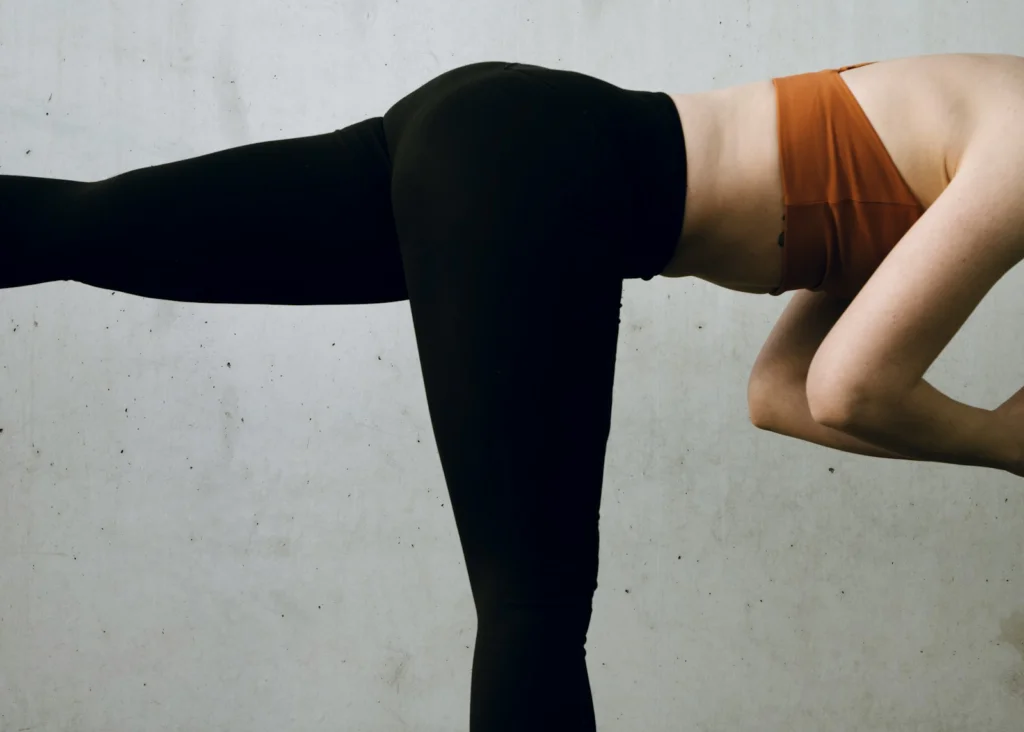
Week 4: Something Shifted
- Walked 6 out of 7 days
- It started feeling like a habit, not a chore
- Could walk the whole time without huffing
- Jeans felt a tiny bit looser (or was that wishful thinking?)
- Realized I actually looked forward to my walks
The changes nobody warned me about:
| Expected Changes | Actual Changes That Happened First |
|---|---|
| Weight loss | Better sleep within 2 weeks |
| Visible muscle | Less anxiety almost immediately |
| Six-pack abs | Could climb stairs without dying (week 3) |
| Athletic body | Wanted healthier food (week 4) |
| Tons of energy | More stable mood throughout day |
| Looking different | Feeling capable for first time in years |
The physical changes? Those took months. Actual months.
But the mental and emotional changes? Those started happening within weeks.
And honestly? Those were the changes that kept me going when the scale refused to budge.
The Progress Instagram Doesn’t Track (But You Should)
Here’s what I started measuring instead of just weight and appearance:
My “Real Results” Tracking Sheet:
| Measure | Month 1 | Month 3 | Month 6 | Month 12 |
|---|---|---|---|---|
| Can walk without getting winded | 5 minutes | 20 minutes | 45 minutes | Over an hour, no problem |
| Flights of stairs before dying | Half a flight | 2 flights | 5 flights | Don’t even think about it |
| Days feeling energized (per week) | 1-2 | 3-4 | 5-6 | Most days |
| Quality of sleep (1-10) | 4 | 6 | 8 | 8-9 |
| Anxiety level (1-10) | 8 | 6 | 4 | 3-4 |
| Days I actually moved my body | 4 | 5 | 5-6 | 6 |
| How I feel about exercise | Hate it | Don’t hate it | Kind of like it | Actually look forward to it |
| Grocery bags from car to house | Multiple trips | 2 trips | One trip | One trip, plus other stuff |
The measurements that actually mattered:
- Could play with my niece without needing a break
- Carried ALL the groceries in one trip (major milestone!)
- Went on a hike with friends and wasn’t the one holding everyone up
- Didn’t dread walking from the parking lot
- Felt strong putting luggage in the overhead bin
- Could get up from the floor without using my hands
- Had energy after work instead of collapsing on the couch
None of these things show up in a gym selfie. But they changed my entire life.
The Workout Plan That Actually Worked (Because It Was Realistic)
Everyone wants to know: what’s the perfect workout plan?
Here’s the secret: the perfect workout plan is the one you’ll actually do.
Not the one that promises the fastest results. Not the one your favorite influencer sells. Not the one that sounds impressive when you tell people about it.
The one you’ll do consistently, even on days you don’t feel like it.
Here’s what I actually did:
Months 1-2: Just Move
- Goal: 10 minutes of walking, 5 days a week
- That’s it. That’s the whole plan.
- Some days I did more. Most days I did exactly 10 minutes.
- The goal was consistency, not intensity.
Months 3-4: Add a Little More
- Still walking, but now 20-30 minutes
- Added: stairs when I could, took the long route places
- Started doing gentle stretching before bed (felt good!)
- Maybe did a YouTube workout video once a week (keyword: maybe)
Months 5-6: Getting Stronger
- Walking 30-40 minutes, feeling good
- Added: bodyweight exercises 2x per week (squats, modified push-ups, planks)
- Started with 5 minutes of strength work, built up to 15-20 minutes
- Still took rest days. Lots of them.
Months 7-12: Finding My Groove
- Mix of walking, strength training, occasionally tried new things
- Discovered I actually like yoga (WHO AM I??)
- Learned that rest days make me stronger, not weaker
- Worked out 4-6 days a week, but some days were gentle
- Listened to my body instead of following a strict plan
My weekly schedule looked like:
| Day | What I Actually Did | What Instagram Thinks I Did |
|---|---|---|
| Monday | 30-min walk + 10 min strength | “Leg day! 💪 #beastmode” |
| Tuesday | Gentle yoga video (20 min) | “Active recovery flow ✨” |
| Wednesday | Rest day (literally nothing) | Still posting gym selfies somehow |
| Thursday | 30-min walk | “Cardio crushing! #fitspo” |
| Friday | 20 min strength workout | “Arm day! Feeling it! 🔥” |
| Saturday | Long walk (45+ min) or hike | “Weekend warrior vibes!” |
| Sunday | Rest or gentle stretching | Maybe posting a meal prep? |
The real rules I followed:
- Something is always better than nothing
- Ten minutes counts as a workout
- Rest days are part of the plan, not failure
- Missing one day doesn’t mean the week is ruined
- Walking is exercise (yes, really)
- If it hurts (bad hurt, not muscle burn), stop
- Progress isn’t linear—some weeks you feel stronger, some weeks you don’t
The Equipment I Actually Used (Spoiler: Almost None)
Instagram wants you to think you need:
- Gym membership ($50+/month)
- Cute workout clothes ($hundreds)
- Equipment (weights, bands, mat, foam roller, etc.)
- Fitness tracker ($100+)
- Supplements and protein powders
- Meal prep containers
- A home gym setup
What I actually used for the first 6 months:
- My feet (for walking)
- My body (for bodyweight exercises)
- YouTube (free workout videos)
- My neighborhood (free gym)
- An old towel (as a yoga mat)
- Whatever clothes I already owned
Total cost: $0
What I eventually bought (because I wanted to, not because I needed to):
- Resistance bands: $15 (still use these 3 years later)
- A real yoga mat: $20 (because the towel was sliding)
- One set of dumbbells: $30 (bought used)
- Better sneakers: $60 (because my old ones were literally falling apart)
Total additional cost: $125 spread over a year
Compare that to the gym membership I almost bought: $600/year that I probably would have used for two months and then felt guilty about.
Free resources that changed everything:
| Resource | What It Is | Why It’s Great | Link |
|---|---|---|---|
| YouTube Fitness Channels | Free workout videos | Try different styles, no commitment | Search “beginner home workout” |
| Nike Training Club App | Free workout app | Professional plans, no equipment needed | Nike Training Club |
| Map My Walk | Free walking tracker | Helps track progress | Map My Walk |
| Fitness Blender | Free workout videos | No ads, no BS, just workouts | Fitness Blender |
| Yoga with Adriene | Free yoga videos | Gentle, beginner-friendly, calming | Yoga with Adriene |
You don’t need stuff. You need consistency. And consistency comes from removing barriers, not adding equipment.
The Mental Shifts That Changed Everything
This is the part nobody talks about, but it’s the most important part.
The physical journey was hard. But the mental journey? That was the real work.
Shift 1: From “All or Nothing” to “Something is Enough”
Old thinking: “I don’t have a full hour, so I won’t work out at all.”
New thinking: “Ten minutes is better than zero minutes.”
This single shift changed everything. Because here’s the truth: showing up matters more than what you do when you’re there.
A 10-minute walk is better than planning an hour-long workout you never do.
Shift 2: From “I Should” to “I Get To”
Old thinking: “Ugh, I should work out today.”
New thinking: “I get to move my body today.”
I know this sounds cheesy. I rolled my eyes at this advice for years. But changing your language literally changes your brain.
Your body isn’t a problem to fix. It’s not broken. It’s not failing you.
It’s carrying you through your life. And moving it is a gift, not a punishment.
Shift 3: From Punishment to Celebration
Old thinking: “I need to work out to burn off that pizza I ate.”
New thinking: “I’m working out because it makes me feel strong and capable.”
Exercise isn’t punishment for eating. Food isn’t something you earn through exercise.
Exercise is celebrating what your body can do. Food is fuel and pleasure and connection.
They’re not related. And realizing this was life-changing.
Shift 4: From “Results” to “Practice”
Old thinking: “I’ve been doing this for a month and I don’t look any different. What’s the point?”
New thinking: “I’m building a practice. Results will come, but the practice is what matters.”
You don’t brush your teeth for results. You brush them because it’s part of taking care of yourself.
Exercise is the same. It’s not about earning a different body. It’s about taking care of the body you have.
Shift 5: From Comparison to Personal Best
Old thinking: “That person on Instagram can do 50 push-ups and I can barely do one. I’m so weak.”
New thinking: “Last month I couldn’t do any push-ups. Now I can do one. That’s progress.”
The only person you’re competing with is yourself from yesterday. That’s it. That’s the only comparison that matters.
My “comparison detox” plan:
- Unfollowed fitness accounts that made me feel bad
- Muted people who only posted gym selfies
- Followed people who showed real, messy fitness journeys
- Stopped weighing myself daily (this was HUGE)
- Started journaling about how I felt instead of how I looked
The Setbacks Nobody Shows You (And How I Got Through Them)
Instagram shows transformations like they’re smooth, linear journeys. They’re not. Not even close.
My real fitness timeline:
Month 2: Got sick for two weeks, didn’t work out at all, felt like I lost all progress.
Month 4: Injured my knee doing something stupid, had to take a month off, gained back weight I’d lost.
Month 6: Hit a major plateau, nothing was changing, seriously considered quitting.
Month 8: Life got crazy at work, workouts became inconsistent, felt like a failure.
Month 10: Got back on track, but progress was slower than before, frustrating as hell.
Month 12: Finally felt like I was making real progress again.
The setbacks I had:
| Setback | How Long It Lasted | What I Learned | How I Got Through It |
|---|---|---|---|
| Got sick | 2 weeks | Rest is necessary, not failure | Went back to basics: 10-min walks |
| Knee injury | 1 month | Listen to your body or pay the price | Found exercises that didn’t hurt knee |
| Plateau | 6+ weeks | Progress isn’t always visible | Focused on how I felt, not how I looked |
| Work stress | 3 weeks | Life happens, it’s okay | Did what I could, 5-10 min was enough |
| Lost motivation | 2 weeks | Motivation isn’t constant | Relied on habit, not feelings |
| Compared self to others | Ongoing struggle | Comparison is a joy thief | Limited social media, focused on my wins |
The truth about setbacks:
- They’re not failure—they’re part of the process
- Getting back to it matters more than not stopping
- Progress isn’t lost as quickly as you think
- Your body remembers, even after breaks
- Starting over doesn’t mean starting from zero
What got me through:
- Lowering the bar (can’t do 30 min? Do 10)
- Being kind to myself (would I talk to a friend this way?)
- Remembering my “why” (energy to live my life, not a different body)
- Looking back at where I started (I’ve come so far!)
- Reaching out for support (told friends when I was struggling)
The Food Truth Fitness Instagram Hides
Let’s talk about food for a second, because this is where fitness culture gets really toxic.
What Instagram shows:
- Perfect meal prep in matching containers
- Green smoothies and açai bowls
- “What I eat in a day” (that’s like 800 calories, but okay)
- Perfectly portioned meals
- Never any “bad” food
- “Cheat meals” that require earning
- Bodies that are only possible with extremely restrictive diets
What actually happened for me:
- I ate mostly normally
- I didn’t track calories or macros
- I still had pizza, ice cream, and all the foods I love
- I focused on adding nutritious food, not removing “bad” food
- I ate when I was hungry
- I stopped using exercise to “earn” food
- I let go of the guilt
My real food philosophy:
| Approach | Old Me | New Me |
|---|---|---|
| Breakfast | Skipped or protein bar | Actually ate when hungry |
| Lunch | Whatever was fast | Added more vegetables because I felt better |
| Dinner | Normal meal | Normal meal, maybe bigger portions of veggies |
| Snacks | Felt guilty about | Ate when hungry, no guilt |
| Treats | “Cheat meal” mentality | Regular part of life, no earning required |
| Alcohol | Counted calories obsessively | Had it when I wanted it, moderation naturally happened |
What naturally changed when I started moving:
- I craved water more
- I wanted more protein (body was asking for it)
- I noticed which foods made me feel energized vs. sluggish
- I naturally ate a bit more on active days
- I wasn’t as interested in super processed food (but still had it sometimes!)
I didn’t diet. I didn’t restrict. I didn’t follow a meal plan.
I just started paying attention to how food made me feel, and my choices gradually shifted.
But gradually. Over months. Not overnight.
The Books and Resources That Actually Helped
When I was drowning in Instagram fitness advice, these resources threw me a lifeline of sanity.
Books That Changed My Perspective:
“Intuitive Eating” by Evelyn Tribole and Elyse Resch
Helped me unlearn diet culture and trust my body again. Game-changer for my relationship with food and exercise. (Amazon link)
Key quote: “We’ve been led to believe that if we can’t control our eating, we won’t be able to control our weight. But the truth is, it’s the control that’s causing the problem.”
“The Joy of Movement” by Kelly McGonigal
A psychologist’s look at how movement affects our mental health and happiness. Made me realize exercise isn’t about changing my body—it’s about feeling alive. (Amazon link)
Key quote: “Movement is a celebration of what your body can do, not a punishment for what you ate.”
“Body Kindness” by Rebecca Scritchfield
Practical, science-based approach to health that doesn’t require hating yourself. Focuses on sustainable changes, not quick fixes. (Amazon link)
“Atomic Habits” by James Clear
Not specifically about fitness, but taught me how to build sustainable habits. The 1% better every day concept changed how I approached everything. (Amazon link)
Podcasts for Real Talk:
- “Food Psych” with Christy Harrison – Anti-diet, body-positive approach to health
- “The Fitness Industry Podcast” – Behind-the-scenes look at fitness marketing (eye-opening!)
- “Maintenance Phase” – Debunks wellness and weight loss fads with humor and science
- “Ten Percent Happier” – Meditation and mindfulness (helped with the mental game)
YouTube Channels That Keep It Real:
- Fitness Blender – No-nonsense workouts, no before/afters, just movement (Channel)
- Yoga with Adriene – Gentle yoga for real bodies (Channel)
- The Fitness Marshall – Dance workouts that are actually fun (Channel)
- Body Positive Fitness Alliance – Inclusive fitness education
Instagram Accounts Worth Following:
(Because not all fitness Instagram is toxic—these accounts actually help)
- @nourishmovelove – Real workouts for real moms
- @syattfitness – Evidence-based fitness without BS
- @thebirdspapaya – Body positivity and real life
- @mynameisjessamyn – Plus-size yoga and movement
- @werdahdoing – Disability and fitness
What Success Actually Looks Like (Spoiler: Not Instagram)
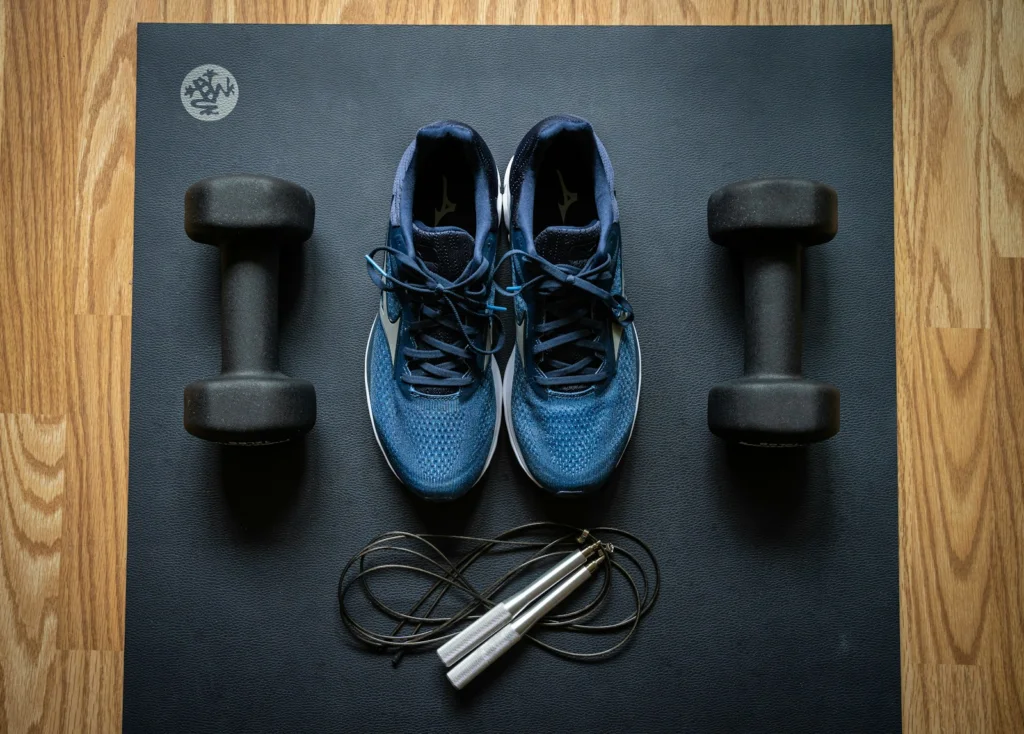
After a year of this journey, here’s what success looked like for me:
Physical changes (that took forever):
- Lost some weight (honestly don’t know how much, stopped weighing myself)
- Got stronger (could do a real push-up!)
- Built some muscle (slight definition in arms)
- Better posture from core strength
- Clothes fit differently (some looser, some tighter from muscle)
But the REAL changes:
- Wake up with energy most days
- Sleep through the night consistently
- Anxiety is manageable without medication
- Don’t get winded going up stairs
- Can keep up with my niece
- Feel capable and strong in my body
- Actually enjoy moving
- Don’t dread physical activity
- Confidence in areas that have nothing to do with fitness
My “success metrics” now:
| What I Track | What It Tells Me |
|---|---|
| How I feel when I wake up | Am I getting enough rest and recovery? |
| Energy levels throughout day | Is my movement sustainable? |
| How my clothes fit (comfort, not size) | Am I taking care of my body? |
| Mood and anxiety levels | Is movement helping my mental health? |
| Whether I’m excited or dreading movement | Is this sustainable long-term? |
| Whether I can do daily activities easily | Is this improving my life? |
What I don’t track anymore:
- Weight (threw out my scale)
- Calories burned
- Before/after photos
- How I compare to others
- Whether I “earned” my food
- If I’m “beach body ready”
The most successful thing about my fitness journey? I’m still doing it.
Not because I hate my body. Not because I’m trying to look different. Not because I’m earning food or punishing myself.
Because it makes me feel good. Because it’s part of how I take care of myself. Because I’m building a practice that will serve me for the rest of my life.
That’s success. Not a gym selfie. Not visible abs. Just consistency, sustainability, and self-compassion.
The Comparison Chart Nobody Shows You
Let’s get really real about what different fitness journeys actually look like:
Instagram Fitness vs. Sustainable Fitness:
| Aspect | Instagram Version | Real Life Version |
|---|---|---|
| Starting point | Already somewhat fit | Might be starting from zero |
| Time investment | “Just 30 minutes!” (actually 2+ hours with prep) | Whatever you’ve actually got |
| Progress timeline | 8-12 weeks to transformation | 6-12 months to noticeable changes |
| Consistency | Never miss a day! | 4-6 days per week is great |
| Setbacks | Don’t exist in the feed | Happen all the time, totally normal |
| Food | Perfectly planned meals | Normal eating with gradual improvements |
| Rest days | “Active recovery” (still working out) | Actually resting, maybe Netflix |
| Motivation | Always high and excited! | Comes and goes, rely on habit |
| Equipment needed | Full gym, all the gear | Your body, maybe some bands |
| Cost | Hidden (sponsorships) | Can be $0 or very minimal |
| Mental health | Not discussed | Often the biggest benefit |
| Body diversity | Limited representation | All bodies can benefit from movement |
Your Action Plan (Because You CAN Do This)
I know what you’re thinking. “This sounds great, but I don’t know where to start.”
Here’s your plan. It’s so simple it might seem too easy. That’s the point.
Week 1-2: Just Show Up
- Pick something. Anything. Walking, dancing in your living room, a 10-minute YouTube video
- Do it for 10 minutes
- Do it 3-4 times this week
- That’s it. Don’t add anything else. Don’t push harder. Just show up.
Week 3-4: Build the Habit
- Same activity, same duration
- Aim for 4-5 times this week
- Add 5 minutes if it feels good (but don’t force it)
- Pay attention to how you feel—energy, mood, sleep
Week 5-8: Expand Slightly
- Increase to 15-20 minutes if you want
- Maybe try something new once a week
- Keep doing what’s working
- Rest when you need to
Week 9-12: Find Your Groove
- Mix it up if you’re bored (or don’t, if you’re not)
- Maybe add strength training once or twice a week
- Listen to your body
- Celebrate how far you’ve come
Your starter workout menu (pick ONE to start):
Option 1: Walker
- Walk around your neighborhood
- Start with 10 minutes
- Gradually increase distance/time
- No equipment needed
Option 2: Home Mover
- Find a beginner YouTube workout
- 10-15 minutes
- Follow along in your living room
- Try: Fitness Blender or Yoga with Adriene
Option 3: Dancer
- Put on your favorite music
- Dance like nobody’s watching (because they’re not)
- 10-15 minutes
- Counts as cardio, plus it’s fun!
Option 4: Stair Climber
- If you have stairs, use them
- Walk up and down for 10 minutes
- Great cardio, no gym needed
- Can do while watching TV
The only rules:
- Start smaller than you think you need to
- Consistency beats intensity
- Something is always better than nothing
- Rest days are part of the plan
- Listen to your body, not Instagram
- Progress isn’t linear
- You’re doing better than you think
What I’d Tell You Over Coffee
If we were sitting together right now, here’s what I’d want you to know:
You don’t need to transform your body. You don’t need to lose weight to be worthy of moving. You don’t need permission to take care of yourself.
Your body isn’t a before photo. It’s not a project. It’s not broken. It’s carrying you through your life, and it deserves appreciation, not punishment.
You don’t have to love exercise. You just have to find movement that doesn’t make you miserable. Neutral is fine. “This doesn’t suck” is a perfectly valid feeling about working out.
Start so small it feels silly. I’m serious. Start with 5 minutes if 10 feels like too much. You can always do more, but you need to show up first. And showing up is easier when the bar is low.
It’s okay to be a beginner. Everyone starts somewhere. That person doing perfect push-ups at the gym? They couldn’t do them either at some point. You’re not behind. You’re just starting.
Your journey is yours alone. It doesn’t have to look like anyone else’s. It shouldn’t look like anyone else’s. Comparison will steal your joy faster than anything.
The best time to start was yesterday. The second-best time is today. Not Monday. Not next month. Not after you buy workout clothes. Today. Right now. Just 10 minutes.
The Bottom Line
My fitness journey didn’t look like Instagram. It wasn’t beautiful. It wasn’t linear. It wasn’t photogenic.
It was messy and hard and frustrating. I cried. I quit and started again. I had setbacks. I plateaued for months. I felt like a failure more times than I can count.
But you know what? I kept showing up. Not perfectly. Not even consistently at first. But I kept coming back.
And slowly—so slowly I barely noticed—things changed.
Not just my body. Not just my fitness level. But my entire relationship with movement. With my body. With what I thought I was capable of.
I went from someone who couldn’t walk up a flight of stairs without huffing to someone who goes on hikes for fun. I went from feeling weak and helpless to feeling strong and capable.
I went from hating exercise to actually looking forward to it.
And it didn’t take perfection. It didn’t take expensive equipment or a gym membership or cute workout clothes or a perfect body to start with.
It just took showing up. Over and over. Even when I didn’t want to. Even when progress was invisible. Even when Instagram made me feel like I was doing it wrong.
You can do this too. I promise you can.
Not because you have to. Not because you need to fix yourself. Not because you owe anyone a different body.
But because moving your body is a gift you give yourself. Because feeling strong is powerful. Because you deserve to feel capable and energized and proud of what your body can do.
You don’t need perfect gym selfies to have a successful fitness journey.
You just need to start. And keep going. And be kind to yourself along the way.
That’s it. That’s the whole thing.
Your Next Three Steps (That’s All You Need Right Now)
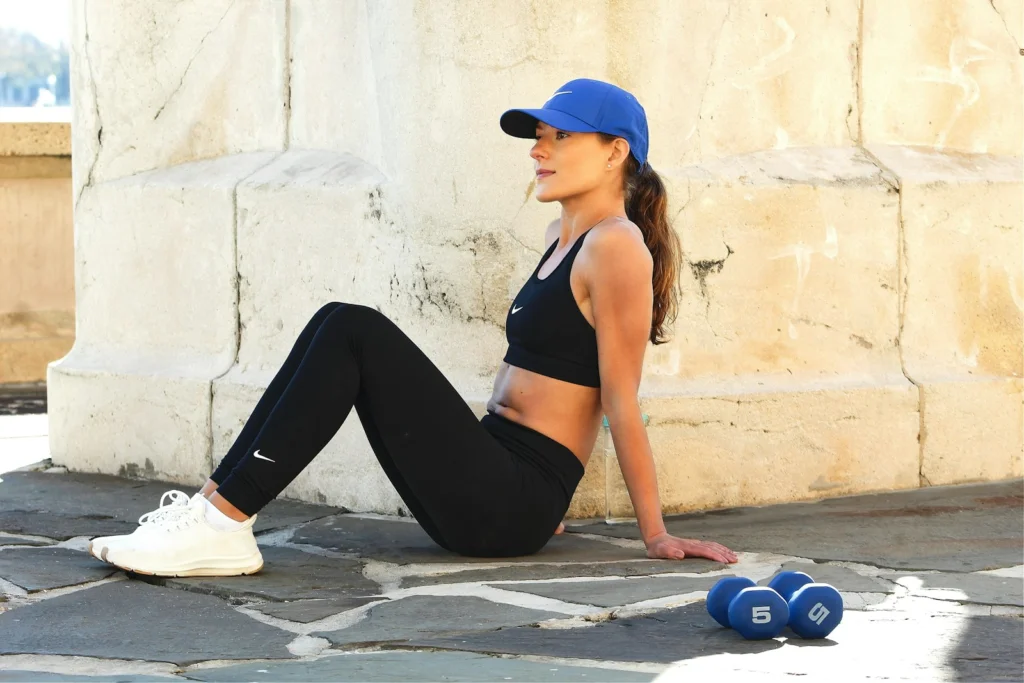
- Put on comfortable clothes. Right now. Whatever you’ve got. Doesn’t matter if they match or look cute.
- Set a timer for 10 minutes. Just 10. You can do anything for 10 minutes.
- Move. Walk around your house. Go outside. Dance. Do stretches. Follow a YouTube video. It doesn’t matter what. Just move for 10 minutes.
That’s it. That’s your only assignment.
Don’t plan next week. Don’t buy equipment. Don’t research the perfect program. Just do these three things right now.
Everything else can come later. But this—right now—this is how it starts.
You’ve got this. I believe in you. And I’m cheering you on from over here, in my mismatched workout clothes, about to take a very unglamorous walk around my neighborhood.
Welcome to the real fitness journey. It’s going to be imperfect and beautiful, and you’re going to surprise yourself with what you’re capable of.
Let’s do this. 💪
Quick Start Resources:
- Fitness Blender – Free Workouts – No equipment, all levels
- Nike Training Club App – Free workouts you can do anywhere
- Couch to 5K App – If you want to try running eventually
- DailyBurn – Free Trial – Variety of workout styles
- r/EOOD (Exercise Out Of Depression) – Supportive community
Remember: The best workout is the one you’ll actually do. Start small. Stay consistent. Be kind to yourself. That’s the real secret to success.
The Mistakes I Made (So You Don’t Have To)
Let’s talk about what NOT to do, because I did all of it and paid the price.
Mistake #1: Starting Too Hard, Too Fast
I thought I could go from couch potato to workout warrior in a week.
What I did: Attempted a “30-Day Transformation Challenge” on day one. Did an hour-long HIIT workout. Could barely walk the next day. Didn’t work out again for two weeks.
What I should have done: Started with 10 minutes. Built up gradually. Treated it like a marathon, not a sprint.
The lesson: Your enthusiasm will fade. Your habits won’t—if you build them slowly.
Mistake #2: Buying All the Things
Before I even started, I spent $200 on:
- Workout clothes I felt too self-conscious to wear
- Resistance bands I didn’t know how to use
- A yoga mat that collected dust
- Protein powder that tasted like chalk
- A fitness tracker that stressed me out
What I actually needed: Nothing. I needed zero dollars worth of stuff to start.
The lesson: Equipment doesn’t create motivation. Start with what you have. Buy things only after you know you’ll use them.
Mistake #3: Following Someone Else’s Plan
I tried to do exactly what fitness influencers did:
- Wake up at 5 AM (I’m not a morning person)
- Do their specific workout split (too complicated for a beginner)
- Eat their meal plan (foods I didn’t even like)
- Follow their schedule (didn’t fit my life at all)
The result: Lasted three days before giving up completely.
The lesson: Cookie-cutter plans don’t work for custom lives. Build YOUR plan around YOUR life, not the other way around.
Mistake #4: Tying Everything to Weight Loss
I started with one goal: lose weight. Every workout was measured by calories burned. Every food choice was about the scale.
The problem: When the scale didn’t move (and it often didn’t), I felt like a failure. Even though I was getting stronger, sleeping better, and feeling more energized.
What changed: I threw out my scale and focused on how I felt, not how I looked.
The lesson: Weight is a terrible measure of fitness progress. It doesn’t account for muscle gain, water retention, hormones, or a million other factors. Find better metrics.
Mistake #5: No Rest Days
I thought rest days were for weak people. I thought “no days off” was the path to success.
The reality: I burned out. I got injured. My progress actually slowed down because my body never recovered.
What I learned: Rest days aren’t lazy. They’re when your body actually gets stronger. The workout breaks down your muscles; rest builds them back up.
Current rule: At least 1-2 rest days per week. Non-negotiable.
Mistake #6: All-or-Nothing Thinking
If I missed a workout, I’d think, “Well, I already ruined today, might as well skip the rest of the week.”
If I didn’t have an hour, I wouldn’t work out at all.
If I couldn’t do the full workout, I’d just quit halfway through.
The shift: Something is ALWAYS better than nothing. Always.
- Can’t do 30 minutes? Do 10.
- Can’t do the full workout? Do half.
- Missed today? Just start again tomorrow.
The lesson: Perfection is the enemy of progress. Good enough is actually great.
The Real Timeline Nobody Talks About
Instagram shows you 8-week transformations. Let me show you what actually happens over time.
My realistic progress timeline:
Weeks 1-4: The Adjustment Phase
- Physical changes: Basically none visible
- How I felt: Sore, tired, questioning everything
- What was actually happening: Building neural pathways, body learning movements
- Victories: Made it through a month!
Weeks 5-8: The Consistency Phase
- Physical changes: Slightly better endurance, clothes fit a tiny bit differently
- How I felt: Getting easier, starting to feel like a habit
- What was actually happening: Cardiovascular improvements, some muscle memory
- Victories: Could walk without getting winded
Weeks 9-16: The “Is This Working?” Phase
- Physical changes: Small changes in strength, maybe some definition
- How I felt: Frustrated with slow progress, tempted to quit
- What was actually happening: Real muscle building, metabolic changes
- Victories: Did my first real push-up!
Weeks 17-26: The Breakthrough Phase
- Physical changes: Noticeable strength gains, body composition shifting
- How I felt: Stronger, more confident, actually enjoying it
- What was actually happening: All the work finally showing results
- Victories: Friends started commenting on my energy
Months 7-12: The Sustainable Phase
- Physical changes: Visible muscle definition, better posture, different body shape
- How I felt: This is just part of my life now
- What was actually happening: Long-term habit formation, lasting changes
- Victories: Went on a challenging hike and crushed it
Year 2+: The Lifestyle Phase
- Physical changes: Continuing to get stronger, more capable
- How I felt: Can’t imagine not moving regularly
- What was actually happening: True lifestyle change, not temporary fix
- Victories: Exercise is just something I do, like brushing my teeth
The truth about progress:
| What You Expect | What Actually Happens |
|---|---|
| Linear improvement | Ups, downs, plateaus, then breakthroughs |
| Fast visible changes | Slow internal changes first, visible later |
| Motivation stays high | Motivation comes and goes, habits stay |
| It gets easier | Some days are hard even years in |
| You’ll love it immediately | You might never love it, but you’ll value it |
The Mental Health Benefits Nobody Mentions
This is the part that saved me, honestly. The physical changes were nice. But the mental health changes? Life-changing.
What I noticed:
Week 2: Sleeping better, falling asleep faster
Week 3: Anxiety noticeably lower, less spiraling thoughts
Week 4: Energy more stable throughout the day, fewer crashes
Week 6: Mood more balanced, less reactive to stress
Week 8: Confidence improving in areas unrelated to fitness
Week 12: Depression symptoms significantly reduced
My therapist literally asked what I was doing differently. When I told her I’d started walking regularly, she said, “That makes sense. Exercise is one of the most effective treatments for anxiety and depression.”
The science behind it:
| Benefit | How It Works | When I Noticed It |
|---|---|---|
| Better sleep | Exercise regulates circadian rhythm | Within 2 weeks |
| Reduced anxiety | Burns off stress hormones (cortisol) | Within 3 weeks |
| Improved mood | Increases serotonin and dopamine | Within 4 weeks |
| Better focus | Increases blood flow to brain | Within 6 weeks |
| Higher self-esteem | Accomplishing goals builds confidence | Within 2 months |
| Stress management | Provides healthy coping mechanism | Within 3 months |
The unexpected mental benefits:
- I stopped doom-scrolling as much – Had something better to do with my anxious energy
- I set boundaries more easily – Felt more confident in my worth
- I handled work stress better – Had a healthy outlet for frustration
- I felt more present – Movement got me out of my head
- I was less reactive – Exercise regulated my nervous system
- I felt proud of myself – Finally accomplishing something consistently
Quote that hit different:
“Movement is medicine for creating change in a person’s physical, emotional, and mental states.” — Carol Welch
I thought I was just trying to get in shape. Turns out, I was healing my whole nervous system.
The Body Positivity Piece We Need to Talk About
Here’s the thing nobody tells you: you can pursue fitness AND practice body positivity at the same time.
These aren’t opposing ideas. You don’t have to hate your body to want to move it.
Old mindset: “I need to exercise to fix my body because it’s wrong/bad/not good enough.”
New mindset: “I exercise because my body deserves care, exactly as it is right now.”
The shift:
| Before | After |
|---|---|
| Exercise as punishment | Exercise as celebration |
| Working out to earn food | Moving because it feels good |
| Hating my body into change | Appreciating my body through movement |
| “No pain, no gain” | “Listen to your body” |
| Success = smaller body | Success = capable, strong body |
| All-or-nothing perfection | Sustainable, compassionate practice |
Some truths I had to learn:
✨ You can be fit at any size. Fitness is about what your body can do, not what it looks like.
✨ Health isn’t determined by appearance. You can’t tell someone’s health by looking at them.
✨ You don’t owe anyone a smaller body. Your body is fine as it is. Movement is for YOU, not for other people’s approval.
✨ Rest is productive. Your body needs recovery. It’s not lazy.
✨ Some bodies build muscle easily, some don’t. Genetics matter. Stop comparing.
✨ The “ideal” body is a moving target designed to keep you insecure. There is no finish line. There’s just your life and how you want to live it.
Resources that helped me with this:
- “Anti-Diet” by Christy Harrison – Helped me unlearn diet culture (Amazon)
- “The Body Is Not an Apology” by Sonya Renee Taylor – Radical self-love (Amazon)
- @bodyposipanda on Instagram – Real talk about bodies and movement
- @chr1styharrison on Instagram – Anti-diet dietitian
- Health at Every Size (HAES) movement – Research-backed approach to health without weight focus
The Community Question: Do You Need It?
Instagram makes it seem like you need:
- A gym buddy
- A trainer
- A fitness community
- Accountability partners
- Group classes
The truth: Maybe. Maybe not. It depends on you.
I’m an introvert. Group classes made me anxious. Gym buddies added pressure. Having to coordinate with someone else became another barrier.
What worked for me: Solo workouts on my schedule. Online communities for motivation (not pressure). Occasional classes when I wanted them, not as obligation.
But for my extroverted friend? She THRIVES in group classes. Needs that social aspect. Loves the community. Can’t stay motivated alone.
Both are valid.
Questions to ask yourself:
Do you:
- Feel motivated by others or pressured by them?
- Like being around people when you exercise?
- Need external accountability or does it stress you out?
- Enjoy trying new things with others or prefer your own routine?
- Have flexibility in your schedule or need to work out on your terms?
If you want community, here’s where to find it:
- Local walking groups (often free, low-pressure)
- Community center classes (cheaper than gyms)
- Online communities (r/fitness, r/xxfitness, r/EOOD)
- Activity-specific groups (running clubs, hiking groups, yoga studios)
- Friends who want to start too (just make sure they’re supportive, not competitive)
If you prefer solo:
- YouTube workouts (Fitness Blender, Yoga with Adriene)
- Walking/hiking alone (meditative, peaceful)
- Home gym setup (if space and budget allow)
- Solo gym sessions (headphones in, world out)
The permission you need: There’s no right way to do this. Find what actually makes you want to show up.
The Questions I Get Asked Most
“What if I can’t afford a gym membership?”
You don’t need one. I didn’t have one for the first year. Walking is free. YouTube is free. Your body is the only equipment you need to start.
“What if I’m too out of shape to start?”
You’re not. I promise. Start where you are. Even if that’s 5 minutes of walking. That’s perfect. That’s enough.
“What if people judge me?”
Real talk: Most people at the gym aren’t looking at you. They’re focused on themselves. And anyone who judges someone for bettering themselves? Their opinion doesn’t matter.
“How do I stay motivated when I don’t see results?”
Change your definition of results. Did you show up? That’s a result. Do you feel slightly more energized? That’s a result. Are you building a habit? That’s the biggest result.
“What if I hate exercise?”
Then don’t do traditional exercise. Dance. Garden. Play with kids. Take walks in nature. Clean your house vigorously. Movement doesn’t have to look like a workout.
“How do I exercise with kids/busy schedule/chronic illness/[insert obstacle]?”
Start smaller than you think possible. Five minutes. Involve your kids. Do it early before chaos starts. Modify everything. Something is better than nothing.
“What about diet? Do I need to change how I eat?”
I’m not a nutritionist, so I can’t give specific advice. But I can say: I didn’t diet. I focused on movement. Gradually, my food choices naturally improved because I paid attention to how food made me feel. No restriction. No rules.
“When will I see results?”
Internal results (sleep, energy, mood): 2-6 weeks
Strength gains: 6-12 weeks
Visible physical changes: 12-24 weeks
Life-changing habit formation: 6-12 months
“What if I keep starting and stopping?”
Then you’re normal. I quit and restarted a dozen times. The difference this time? I started small enough that it was sustainable. Lower the bar. Make it easier. You’re not failing—your system is too hard.
What Year Two Looks Like (Because Nobody Shows You This Either)
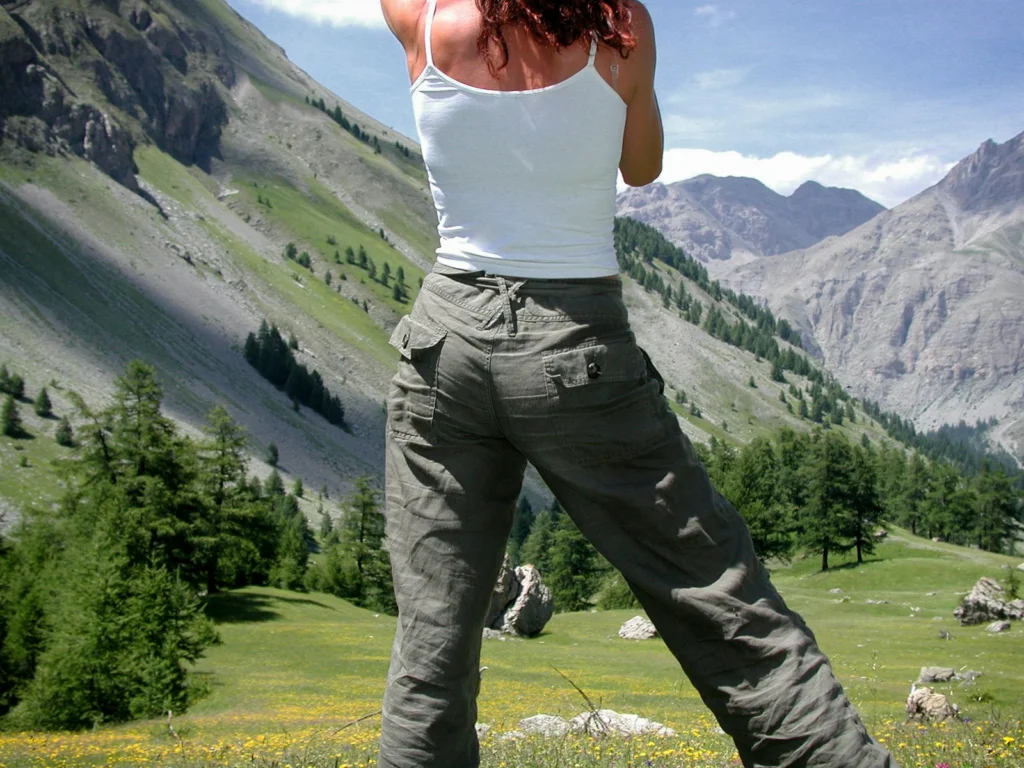
Here’s what nobody tells you about maintaining a fitness practice long-term:
Some days I still don’t want to work out. The difference is, I do it anyway because it’s just what I do now. Like brushing my teeth.
Some weeks I’m inconsistent. Life happens. Illness, travel, stress, whatever. I don’t spiral anymore. I just start again.
My body still changes. Sometimes I’m stronger. Sometimes I’m not. Hormones fluctuate. Life fluctuates. I roll with it.
I’ve tried new things. Started rock climbing. Tried kickboxing. Hated CrossFit (not for me). Discovered I love hiking. Kept experimenting.
I’ve had injuries. Had to stop running for months due to my knee. Learned to listen to my body. Found other ways to move. Healed properly.
I still compare myself sometimes. The difference is, I catch myself now. I redirect. I remember my own journey.
Exercise is just part of my life. Not my whole identity. Not an obligation. Just something I do because it makes life better.
The long-term reality:
- Some years I’m more consistent than others
- Some months I do more, some less
- I’ve gained and lost the same 10 pounds multiple times
- My “perfect” routine has changed a dozen times
- I still have bad body image days
- I still sometimes eat my feelings
- I’m still human
But here’s what’s different:
- I don’t quit entirely anymore
- I have tools to get back on track
- I trust my body more
- I’m kind to myself through changes
- Movement feels like self-care, not punishment
- I’m stronger and more capable at 35 than I was at 25
That’s what sustainable fitness looks like.
Not perfect. Not Instagram-worthy. Not transformation-of-the-year material.
Just consistent. Sustainable. Part of a whole, complex, messy, beautiful life.
The Final Truth
My fitness journey didn’t look like Instagram. It probably never will.
I don’t have abs. I don’t have a thigh gap. I don’t have the “perfect” body by any societal standard.
But I have:
- Energy to live my life fully
- Strength to do things I never thought I could
- Confidence that came from showing up for myself
- Mental health that’s better than it’s been in years
- A body I’m grateful for instead of at war with
- Proof that I can do hard things
And honestly? That’s better than any gym selfie could ever be.
So here’s my challenge to you:
Stop scrolling. Stop comparing. Stop waiting for the perfect plan or the perfect motivation or the perfect time.
Just start.
Start small. Start messy. Start imperfect.
Put on your regular clothes. Set a timer for 10 minutes. Move your body in whatever way feels okay.
That’s it. That’s how this begins.
Not with a transformation post. Not with a perfect gym selfie. Not with expensive equipment or a detailed plan.
Just with you, deciding that you’re worth 10 minutes of movement.
Because you are. Right now. Exactly as you are.
Welcome to the real fitness journey. It won’t look like Instagram.
But it might just change your life.
Now go. Put down your phone and move for 10 minutes.
I’ll be here cheering you on. 💚
Your “I Actually Did It” Tracker
Print this out. Put it on your fridge. Cross off each day you move, even for 5 minutes.
Week 1:
- [ ] Day 1: _____ minutes
- [ ] Day 2: _____ minutes
- [ ] Day 3: _____ minutes
- [ ] Day 4: _____ minutes
- [ ] Day 5: _____ minutes
- [ ] Rest day
- [ ] Rest day
One sentence about how I feel: ________________________________
Week 2:
- [ ] Day 1: _____ minutes
- [ ] Day 2: _____ minutes
- [ ] Day 3: _____ minutes
- [ ] Day 4: _____ minutes
- [ ] Day 5: _____ minutes
- [ ] Rest day
- [ ] Rest day
One thing that got easier: ________________________________
Keep going. You’ve got this.
Final Resource List:
Free Workout Resources:
- Fitness Blender – 600+ free workouts
- DAREBEE – Free fitness plans, no equipment
- Blogilates – Free Pilates workouts
- HASfit – Free workout programs for all levels
Mental Health & Movement:
- NAMI on Exercise – Mental health benefits of movement
- Anxiety and Depression Association – Exercise for anxiety
Body Positive Fitness:
Remember: This is YOUR journey. Not Instagram’s. Not mine. Yours.
And it’s going to be imperfect and beautiful, just like you.


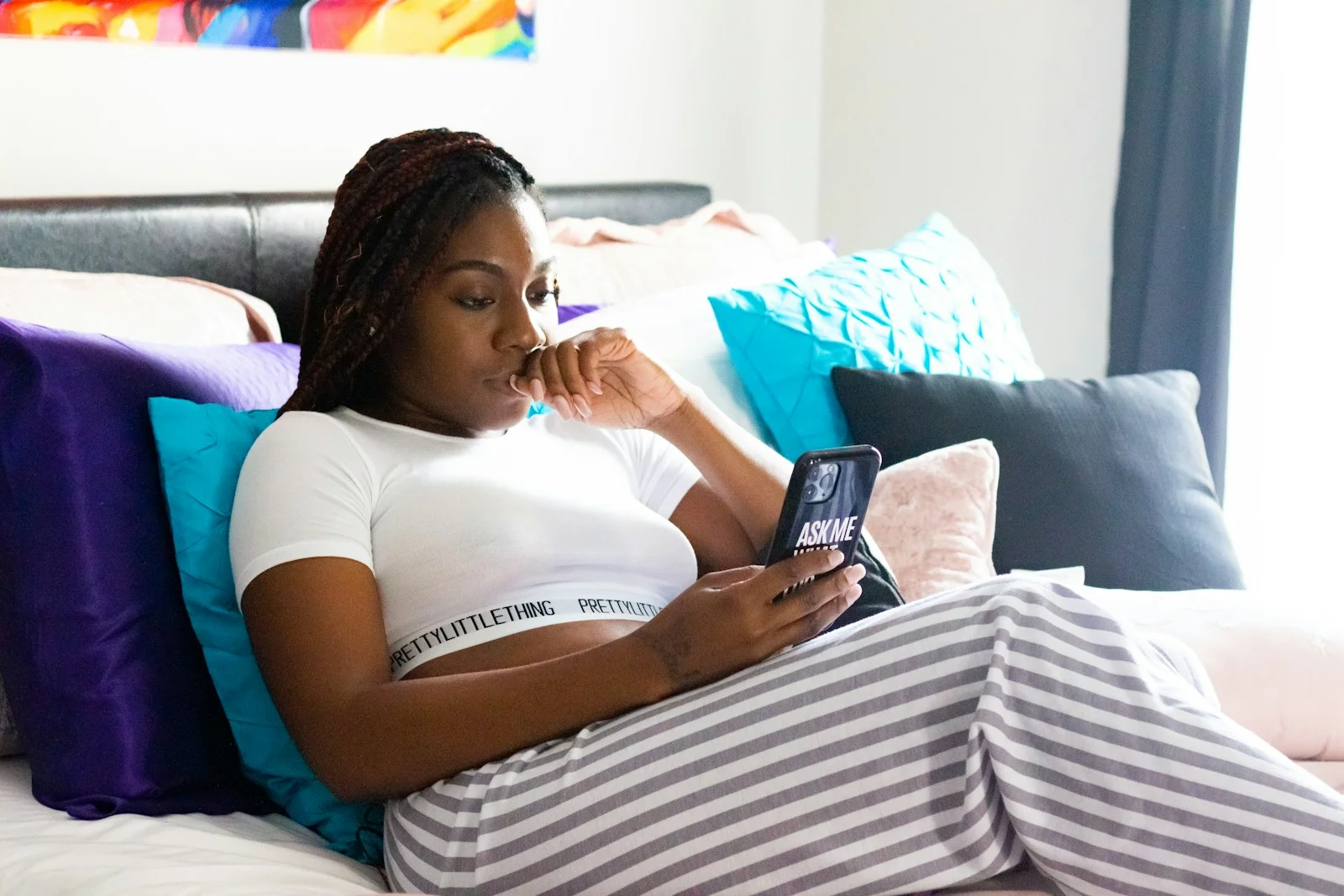
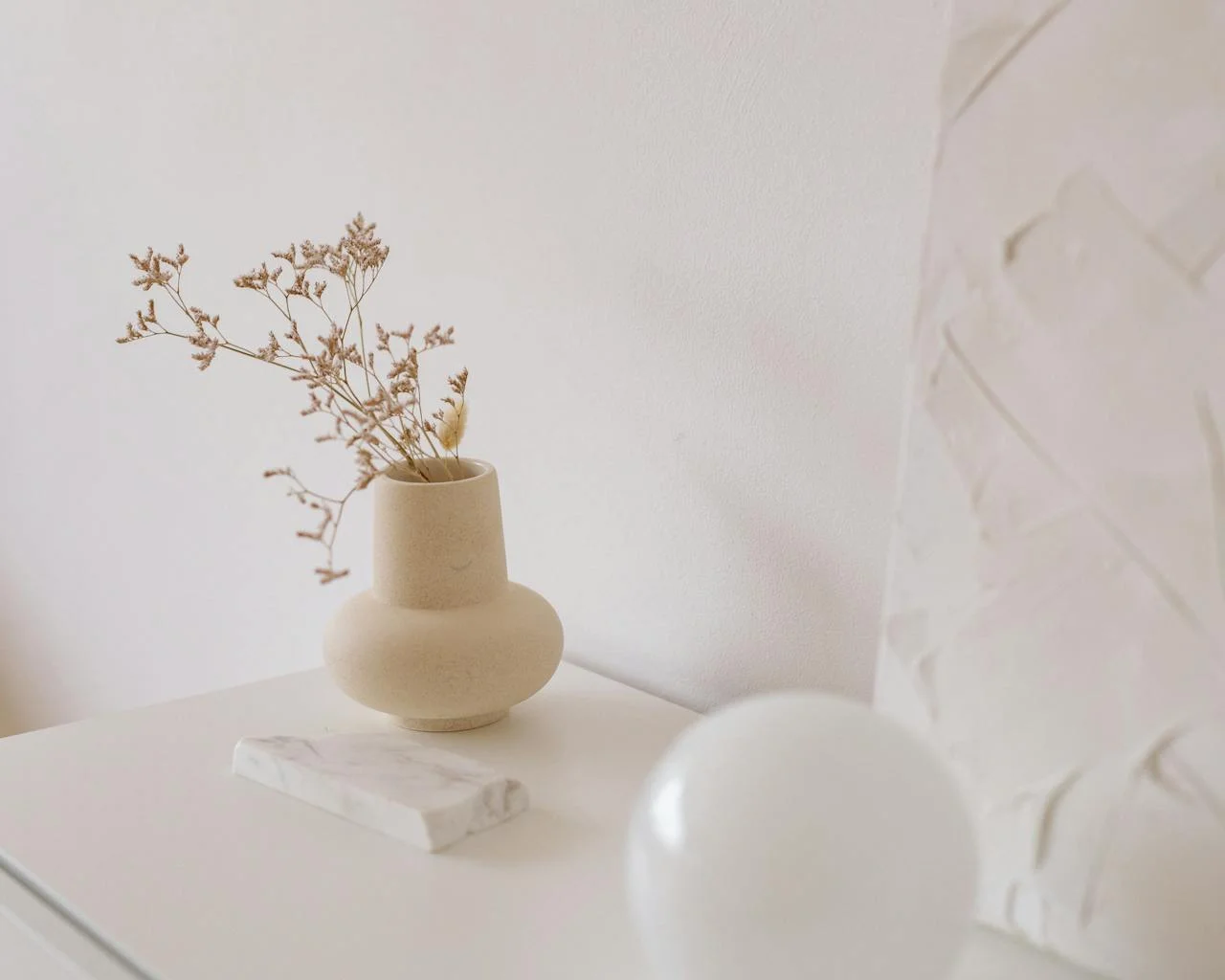

Leave a Reply